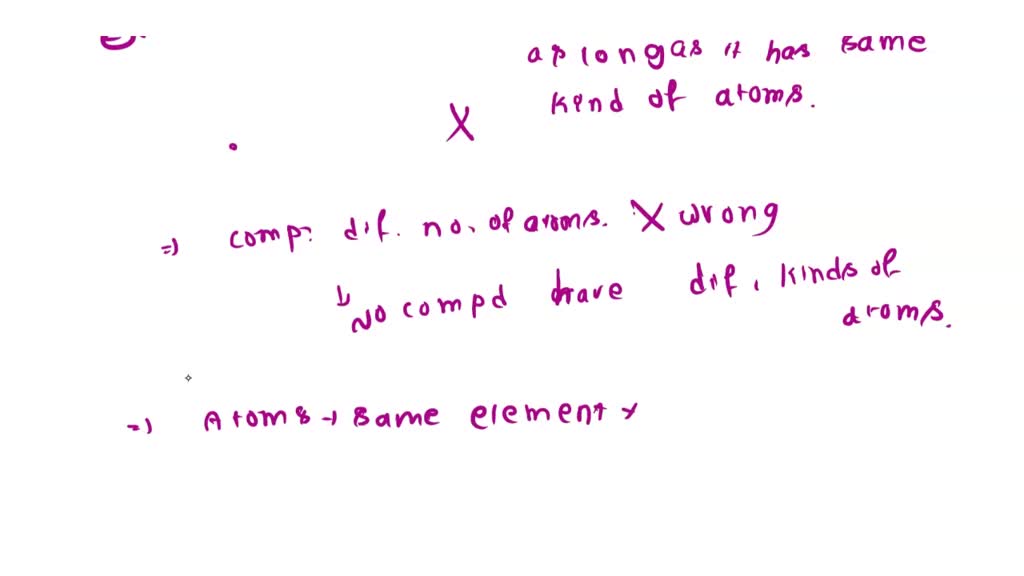Throughout the annals of science, the inquiry into the fundamental constituents of matter has evoked both wonder and trepidation. The assertion that all matter is composed of atomic particles is a cornerstone of modern physics and chemistry. Yet, is this statement unequivocally true? To unravel the intricacies of this assertion, we must embark on a profound exploration that synthesizes paradigms from various dimensions of scientific inquiry.
The Genesis of Atomic Theory
In the ancient world, the quest for the fundamental building blocks of matter can be traced back to philosopher Democritus, who proposed the existence of “atomos,” indivisible particles that constituted all substances. Fast forward to the 19th century; John Dalton resurrected and refined these ideas through the formulation of atomic theory, positing that all matter is made of tiny, indivisible spheres called atoms. This theory ignited a scientific revolution, catalyzing significant breakthroughs in fields as diverse as chemistry, physics, and biology.
Today, atomic theory stands as a monumental edifice, built on the contributions of luminaries such as J.J. Thomson and Ernest Rutherford, who unveiled the intricate substructures of the atom itself. Subsequently, Niels Bohr and others elucidated the quantum nature of these particles, reshaping our understanding of not just matter, but the very fabric of reality.
Diving Deeper: Composition of Atoms
At their core, atoms are composed of a nucleus—an amalgam of protons and neutrons—surrounded by a cloud of electrons. This ensemble can be likened to a miniature solar system: the nucleus represents the sun, immovable yet pivotal, while the electrons orbit in a ballet of quantum probability. Protons, imbued with positive charge, and neutrons, possessing neutrality, congregate within the nucleus, creating what is known as the atomic mass. The electrons, existing in quantized energy states, facilitate interactions with other atoms, leading to the formation of molecules. This intricate dance underscores the essential truth that atomic particles indeed constitute all matter.
The Misty Realm of Subatomic Particles
Yet, the narrative does not start and end with atoms. The subatomic realm opens a Pandora’s box of complexity, revealing particles that defy conventional understanding. Quarks, the building blocks of protons and neutrons, dance in an ephemeral yet essential equilibrium. Gluons and bosons, meanwhile, serve as the unseen architects of the forces governing these interactions, weaving a tapestry that holds the atomic nucleus together.
Modern physics posits that atoms themselves are not the ultimate end, but rather a gateway to a more profound understanding of matter. The Standard Model of particle physics articulates over two dozen fundamental particles, each with distinct properties and behaviors. This profound revelation begs the question: if atoms are constructed from these subatomic entities, can we assert, with unwavering confidence, that all matter is merely a conglomeration of atomic particles?
Implications in Quantum Mechanics
The quantum realm introduces an additional layer of complexity. Matter exhibits dual characteristics; it can exist as both particles and waves, a concept famously encapsulated in the wave-particle duality. This duality challenges the simplistic notion that matter is discreetly comprised of atoms. Instead, it positions matter in a liminal state, ever fluctuating between solidity and ethereality. The infamous thought experiment involving Schrödinger’s cat articulates this volition beautifully, presenting matter not as static, but as dynamic and interwoven with the very essence of existence itself.
The Role of Forces: Beyond Particles
Furthermore, consider the interaction of forces delineated by the four fundamental interactions: gravitational, electromagnetic, strong nuclear, and weak nuclear forces. Each of these forces operates within the realm of atoms and subatomic particles, providing cohesion and organization to the matter we observe. Without these forces, atomic particles would not come together to form atoms, and subsequently, matter itself would collapse into an inconceivable chaos. Thus, we are led to deliberate not only the composition of matter but the very forces that enable coherence and structure in our universe.
Conclusion: A Tapestry of Existence
The assertion that all matter is composed of atomic particles can be deemed robust, yet nuanced. While atoms form the foundational units of matter, they are, in fact, composites of even more diminutive particles, governed by complex interactions that elude simplistic characterization. This revelation fosters a breathtaking perspective on existence—a view of the universe as a vast, intricate tapestry, woven from threads of atomic and subatomic particles, intertwined with the fundamental forces that breathe life into the cosmos. In this grand metaphorical dance, we find both answers and a plethora of questions, propelling humanity deeper into the mysteries that define our very being.












